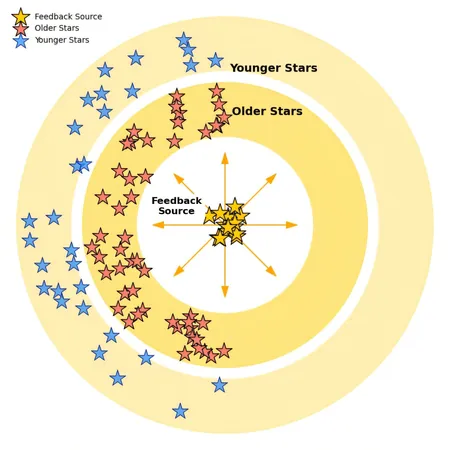
Revolutionary AI Model Transforms Heart Disease Risk Assessment
2025-05-07
Author: Nur
A Game Changer in Heart Disease Prediction
In a groundbreaking study, researchers have unveiled a cutting-edge machine learning model that significantly improves the estimation of an individual’s risk of coronary artery disease (CAD), surpassing traditional methods that rely heavily on age. Published in the prestigious journal *Nature Medicine*, this innovative approach leverages a decade’s worth of data to create tailored assessments by combining genetics, lifestyle factors, and medical history.
Understanding Coronary Artery Disease (CAD)
CAD is the leading cause of heart disease globally, characterized by the narrowing of blood vessels that supply blood to the heart. This condition can lead to severe symptoms like chest pain and shortness of breath, and, in extreme cases, heart attacks due to complete blockages. While it often develops over many years from factors like cholesterol buildup, proactive methods, including regular exercise and smoking cessation, can help prevent its progression.
Accurate Risk Assessment is Critical
The urgency of accurate CAD risk prediction cannot be overstated. Researchers assert that relying solely on age for risk assessment is inadequate, yet effective preventative measures often remain underutilized because many individuals are unaware of their risk until it becomes critical. By integrating both unmodifiable factors (such as age and genetics) and modifiable factors (like lifestyle choices and health metrics), this study aims to provide timely and personalized risk evaluations.
The Findings: Predicting Risk Like Never Before
The study utilized around 2,000 predictive features, encompassing demographics, physical health data, laboratory results, and medication use, to develop its predictive model. Utilizing UK Biobank data, researchers stratified participants into cohorts, successfully training their model with exceptional accuracy. Astonishingly, the new model achieved an area under the curve (AUC) score of roughly 0.84, enabling it to predict twice as many CAD events as traditional clinical models.
A Clear Advantage: The Numbers Don't Lie
After a 10-year follow-up, an impressive 62.9% of individuals classified as 'highest risk' by the model developed CAD, compared to a mere 0.3% in the 'lowest risk' group. This model outshined standard assessments, particularly among populations usually regarded as low risk, such as younger individuals and women.
Empowering Individuals Through Genetic Insights
Lead author Ali Torkamani highlights that this model can identify seemingly low-risk individuals who carry hidden genetic predispositions, thereby emphasizing the need for proactive lifestyle changes or medical interventions. The greatest predictor of CAD risk turns out to be genetic factors, emphasizing the importance of personalized assessments.
A New Era in Heart Health Management
The researchers anticipate that this model could inspire patients to prioritize early prevention measures. By outlining both the risk of developing CAD and personalized intervention options, this framework represents a significant leap towards individualized healthcare.
What Lies Ahead?
The authors intend to conduct long-term clinical trials to understand how informing patients of their CAD risk can bolster preventive action. "Compared to traditional tools, our model provides improved risk classification for approximately one in four individuals, effectively identifying those truly at risk while alleviating unnecessary worries for others," said Chen. The aim is clear: empower patients to understand their risks and act accordingly.


 Brasil (PT)
Brasil (PT)
 Canada (EN)
Canada (EN)
 Chile (ES)
Chile (ES)
 Česko (CS)
Česko (CS)
 대한민국 (KO)
대한민국 (KO)
 España (ES)
España (ES)
 France (FR)
France (FR)
 Hong Kong (EN)
Hong Kong (EN)
 Italia (IT)
Italia (IT)
 日本 (JA)
日本 (JA)
 Magyarország (HU)
Magyarország (HU)
 Norge (NO)
Norge (NO)
 Polska (PL)
Polska (PL)
 Schweiz (DE)
Schweiz (DE)
 Singapore (EN)
Singapore (EN)
 Sverige (SV)
Sverige (SV)
 Suomi (FI)
Suomi (FI)
 Türkiye (TR)
Türkiye (TR)
 الإمارات العربية المتحدة (AR)
الإمارات العربية المتحدة (AR)